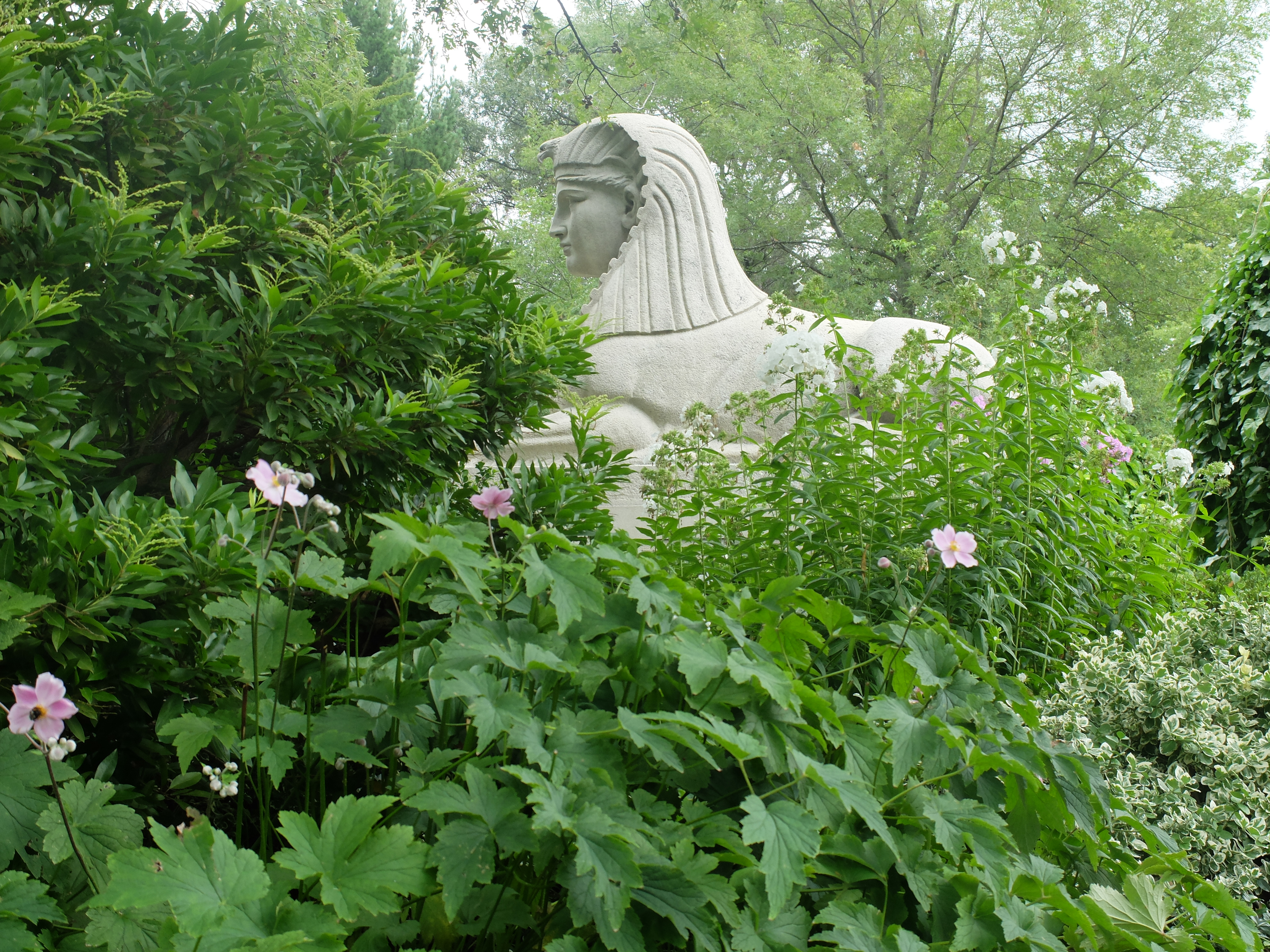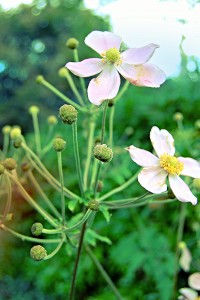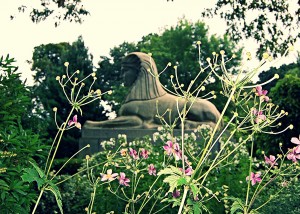Anemone

Anemone and columbine
Where gloom has lain
Opened in gardens
Between love and disdain…
-Guillaume Apollinaire
Anemones are a genus of approximately 120 species, within the RANUNCULACEAE, or buttercup family, that are native across North America, Europe and Asia. Anemone originates from the Greek word anemos, for wind. One amorous Greek legend has it that Anemone was the name of a nymph who was loved by Zephyr, the god of the West Wind. Flora, goddess of flowers, became jealous and changed Anemone into a flower. Zephyr preferred her as a nymph.

Another legend comes from Bulfinch’s Mythology, by Newton-born, Thomas Bulfinch (1796-1867) Lot 2308, Bellwort Path, ” Venus…beheld Adonis, and was captivated with him.” Unfortunately Adonis ignored her advice to avoid dangerous animals, and while hunting a wild boar became its victim. Bulfinch continues, “…the boar overtook him, and buried his tusks in his side, and stretched him dying upon the plain. Venus in her swan-drawn chariot…heard coming up through mid-air the groans of her beloved, and turned…back to earth…Reproaching the Fates, she said…memorials of my grief shall endure, and the spectacle of your death, my Adonis, and of my lamentation shall be annually renewed. Your blood shall be changed into a flower…Thus speaking, she sprinkled nectar on the blood…and in an hour’s time there sprang up a flower…But it is short-lived. It is said the wind blows the blossoms open, and afterwards blows the petals away; so it is called Anemone, or Wind Flower…”
Many species bloom in the spring but herein we will focus on a few that are late-summer/autumn bloomers. Anemone hupehensis, Japanese anemone, and its cultivated varieties may grow 3-4-feet high, and have white, soft-pink or pink flowers. The late-blooming, shallow-cupped flowers encircle orange stamens around a green center. The flowers are upon taller branching stems, well above the foliage, creating an airy, waving in the breeze flowering display. As its name suggests, it is native to central China, but has long been cultivated in Japan. It was Carl Peter Thunberg (1743-1828), who first described this in his 1784, Flora Japonica. The plant would later be introduced into Western cultivated use by Robert Fortune (1812-1880), who sent it to the Horticultural Society of London in 1844 from China. Fortune recorded, “When I first discovered the Anemone japonica, it was in full flower amongst the graves of the natives, which are round the ramparts of Shanghae.”

I count nineteen white blossoms
Which would not be
Visible except for
Their wiry stems that catapult them
Above the grass like
The last white pop
Of fireworks, a toothed blast
Of leaf below….
-Fleda Brown

Another late bloomer is Anemone tomentosa, grapeleaf anemone that is native to Nepal, and is somewhat shorter in stature at 2 ½-feet tall. We grow the cultivar ‘Robustissima’ which you will find near the Sphinx.
On your next visit to Mount Auburn look for our late Anemones on Story Road, in front of our administration offices, and other locations. You will surely also see abundant bees, and other insects visiting these penultimate flowers, as we continue to provide them with needed nectar energy deep into the calendar year.
…It was late in September when time,
Time that is not ours,
Hid itself away….
-May Sarton
Leave a Reply